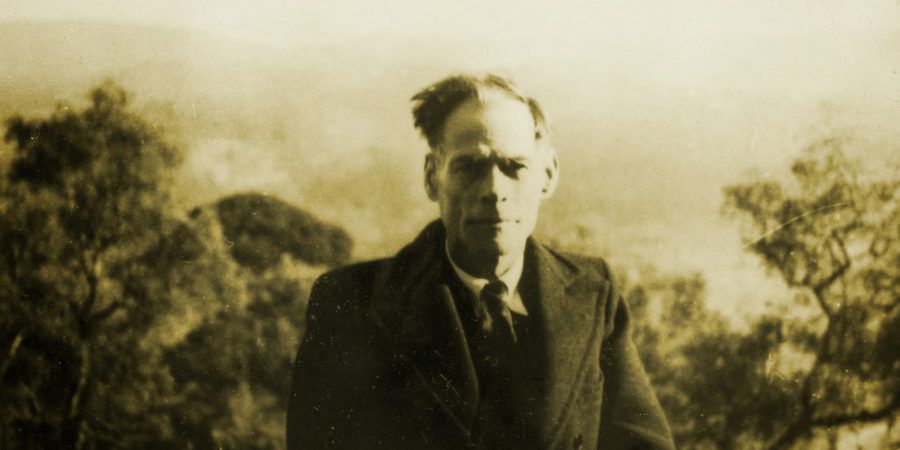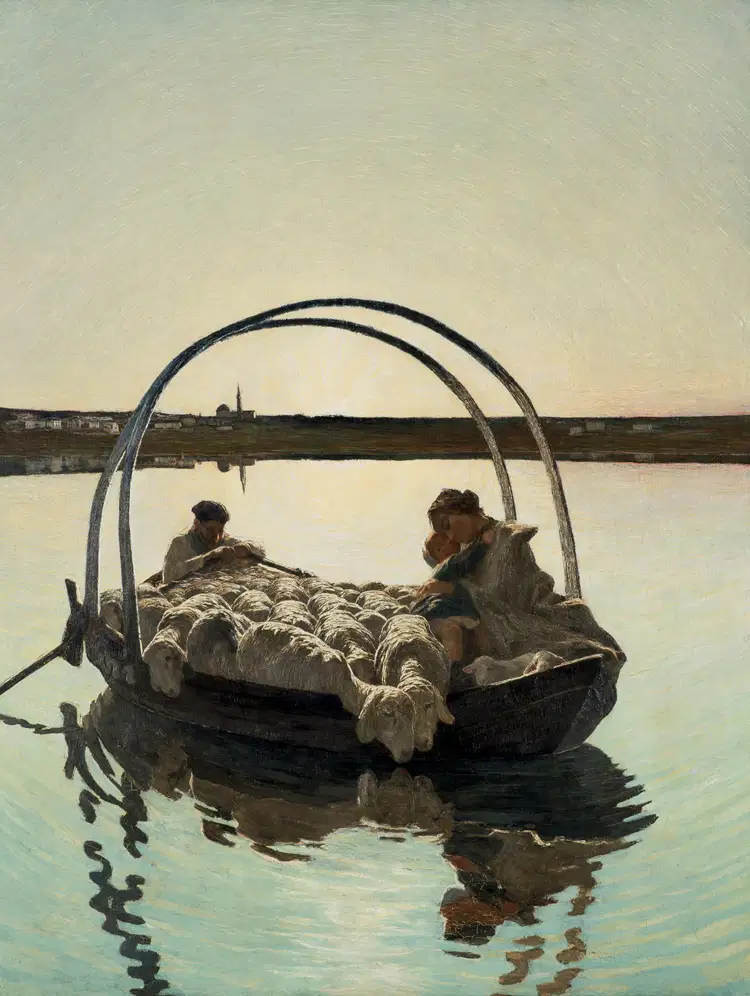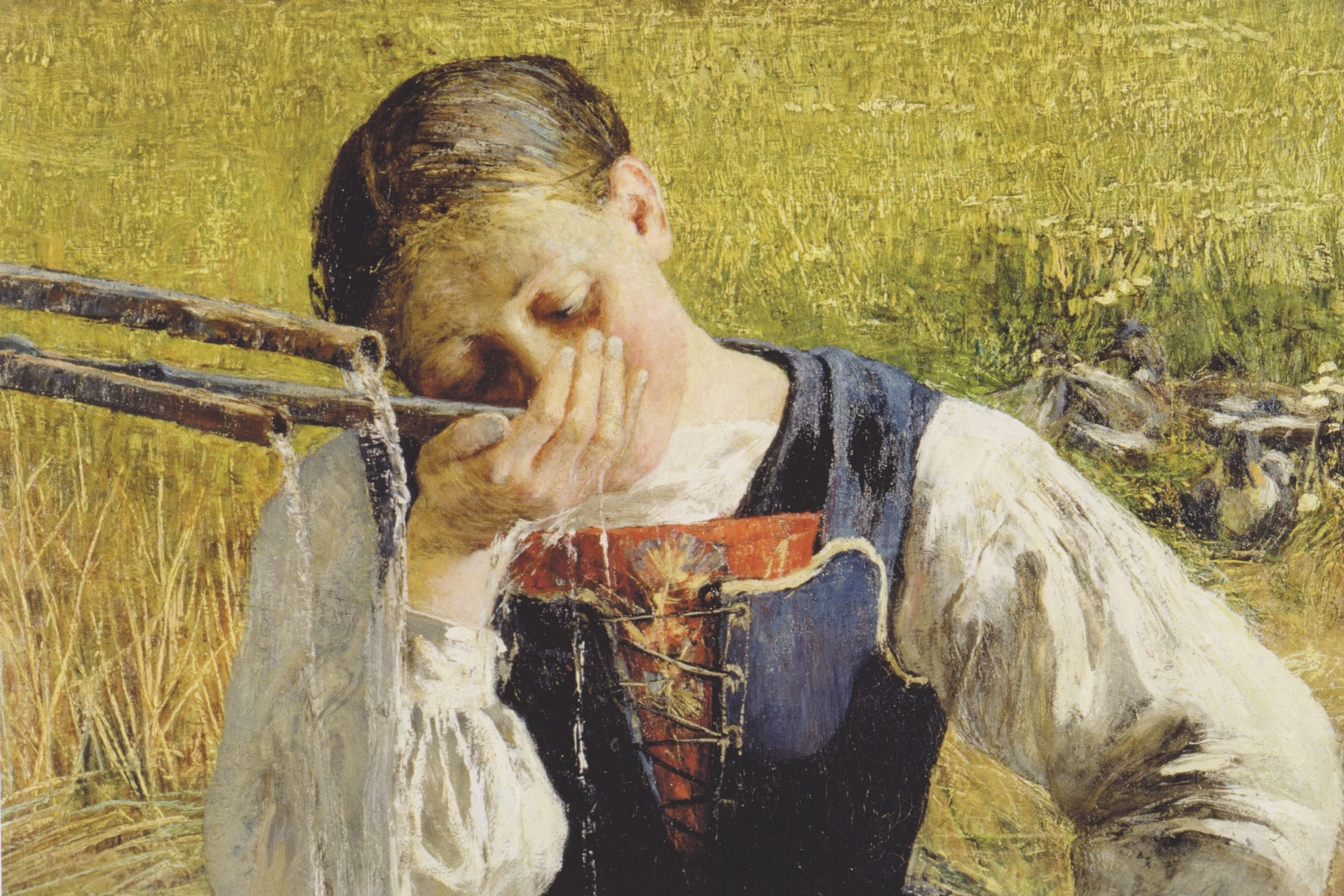How Beuys ended up in the Algarve
My experiences with the charismatic German artist Ernst Föll (1949-2023) - I always affectionately called him Ernesto - usually begin with the remark: 'I don't know if Ernesto was my friend, but it was clear that I was his friend'. When we were sitting on the terrace at Bela's, drinking red Port and Nada called to ask where he stayed, he always said: "Nada, ich zitse hier mit meinem Freund Will"
Ernst Föll on his bicycle & on the terrace at Bela (photo John Shepherd)
It took a while before we met in Olhão. I had already noticed his impressive appearance, especially with that big body and that striking head, when he - usually dressed in black - cycled through the narrow streets of Olhão on his bike. He usually wore a black hat, just like his mentor. Acquaintances who had lived in Olhão for a while told me that he was a famous artist, others said that he was an architect. It only made me more curious.
Artworks by Ernst Föll, including Engelsleiter (left), on exhibition in Faro
Our first encounter came after an exhibition of his work in the municipal museum of Faro. Apart from the colourful minimalist artworks of coloured cardboard and objects in primary colours standing against the wall, I noticed among his presentation a photo of the famous German artist Joseph Beuys standing in front of the Bonnefantenmuseum in my hometown Maastricht. When I heard that Ernesto was organising an exhibition in his house on the occasion of the 100th birthday of the great Joseph Beuys, with various photos, posters and attributes from his personal collection, this was of course the opportunity to start our introduction.
Photo left Ernst Föll on chair right - photo right Joseph Beuys on chair left
Ernesto completed his studies in sculpture with Beuys at the art academy in Düsseldorf and was one of the students who occupied the secretariat together with Professor Beuys in 1972 to protest against the rejection of students due to the admission procedures and the limited numerus clausus, which led to Beuys being dismissed without notice by the Minister of Science, Johannes Rau. The removal of one of the most important artists of the German post-war period led to enormous protests in the art world and not only in Germany.
After his studies, Ernst Föll worked as an art educator and organized workshops and exhibitions for the Free International University for Creativity and Interdisciplinary Research (FIU), founded by Beuys together with Klaus Staeck, Georg Meistermann and Willi Bongard. Since the 1970s, Ernst Föll has also participated in various exhibitions and has also worked as an architect.
Not that he was trained as an architect, but a rich business relationship and the help of architects he hired for drawings and building applications did the rest. He had fulfilled the most luxurious building assignments, from Bauhaus villas to a complete shopping centre and the restoration of various villas from the time of Wilhelm II. Partly thanks to the deep pockets of his client. Information about his work and his projects can be found on the website: www.ernst-foell.com

Ernesto with Nada on the terrace in Olhão
He had ended up in Portugal by chance. Nada, a dance therapist and pedagogue specializing in Argentine tango, had already been living there for years. He had met her as a colleague when he was teaching. They were both around 30 at that time and had their own lives. They had lost sight of each other after that, but apparently not out of their minds. Ernesto wrote a letter to people he had been friends with but had lost along the way, asking: 'What has become out of you?'. Nada immediately invited him to come to Portugal after his letter.
Above all he liked Portugal because of the warmth of the people, the originality of the country and the rough, imperfect landscape. He was also an admirer of the little-known Portuguese poet, writer and philosopher Teixeira de Pascoaes (1877-1952). For him, he was one of the most important writers of the past 200 years. It even went so far that he started to work on a plan to erect a memorial to the poet in the unjustly almost forgotten Amarante, the birthplace of Teixeira de Pascoaes. He was the first to introduce me to this special Portuguese artist. He could talk about him with great passion and even went on a 'pilgrimage' to Amarante during one of his last journeys to visit the home of Teixeira de Pascoaes. Albert Vigoleis Thelen - a German writer/translator - translated a number of works by his friend Teixeira de Pascoaes into German, which will also explain why Ernesto knew him well.
Photo of Teixeira de Pascoaes and a handwritten text by Ernesto in Portuguese and German from the book 'O Bailado' chapter 'As Pegadas''
Because of his unmistakable love for poetry, our conversations often turned to the Dutch poet Hendrik Marsman, whom he greatly admired. Marsman turned out to be a friend of Albert Vigoleis Thelen. Who admired the German philosopher Friedrich Nietzsche and his book "Also sprach Zarathustra", which he translated into Dutch together with Pieter Endt.
But of course we know Marsman best from the poem 'Herinnering aan Holland' (1936), which was elected 'Dutch Poem of the Century' at the end of the twentieth century.
The first part in particular is very well known:
Thinking of Holland,
I gaze broad rivers flowing
slowly through
endless lowlands.
Paintings by Giovanni Segantini - the 'Van Gogh of the Alps''
Another great love of Ernesto, which he did not hide, was his admiration for Giovanni Segantini (1858-1899), who was also called the 'Van Gogh of the Alps'. I rarely had a conversation with Ernesto without d coming up one of these men he admired.
But in all things, Ernesto was the man who brought Beuys to the Algarve. He uninterruptedly continued to propagate Beuys' ideas. Not only through the exhibition he organised at his house, but also in the various writings he often gave me in an envelope with photos, postcards and handwritten notes, sometimes with pieces of text in German with their Portuguese translation. Whether it was about the Escada de Jacob / Engelsleiter or about his 'Kunstbriefe', in which he tells in the first letter about his first meeting with Beuys and in the last letter no. 17 ends with a speech he gave at the screening - in Tavira in 2018 - of the film by Andres Veiel about his 'Teacher Joseph Beuys'. I cherish all these memories of 'my friend' Ernesto
Tentoonstelling over het werk van Joseph Bueys in het huis Nada en Ernesto t.g.v. zijn 100e geboortedag
He was an artist whose button was always 'on' and knew how to bring yhat with elegance in the conversations during our meetings, but also in the various exhibitions about his work that could be admired for a number of years in several places in the Algarve - including the Roman Villa Milreu in Estoi and the Centro Cultural de Lagos. At the end of last year, his physical condition worsened. And when he wasn't feeling well, he wasn't always up for my visits, which meant we saw each other less often. In December, during a family party in the Netherlands, I received an unexpected message from Nada that he had passed away. I was just back in time for his cremation in Faro.

Beuys has left the Algarve, but we will be able to admire his last work. On Sunday 11 August (and afterwards by appointment: tel +351 965755769 ) at 15:00 the opening of the exhibition 'Hidden Work' by Ernst Föll will take place in the Estudio of Nada: 'O Corpo da Danca' - Rua Capitão João Carlos Mendonça 23 in Olhão, exactly on the day that he would have turned 75. That Sunday for sure and otherwise while enjoying a good glass of Port on Bela's terrace I will toast to him, to 'Mein Freund...Ernesto'.

For photos and text thanks to @algarvefurentdecker, @johnshepherd & wikipedia.
About Beuys, who was also called the Andy Warhold of Europe and who was famous for his statement “Jeder Mensch ist ein Künstler.” (“Everyone is an artist.”), an anecdote suddenly occurred to me while writing this blog. I hope I’m telling it correctly....
The city of Cologne had purchased a work of art by Beuys, for a lot of money. It was an installation with a number of pipes that were placed somewhere in a corner. The local carnival association did not like the work of art and the price that was paid for it and decided to organize a parody/protest during Carnival parade. Beuys was known for using felt and grease in his artwork. A reference to his (own stories) about his time as a war pilot, when he was shot down over Russia and after the crash the locals kept him alive by wrapping him in felt and salve him with wax. The carnival association had made a felt suit for everyone and as a protest they would set these suits on fire at the end of the parade. Beuys who had heard of the intention did not think twice and went after the parade armed with a big felt pen. When the moment of setting the suits on fire had arrived, he suddenly jumped forward and signed all the felt suits. They were all taken home..... not a single one was set on fire.












































Comments